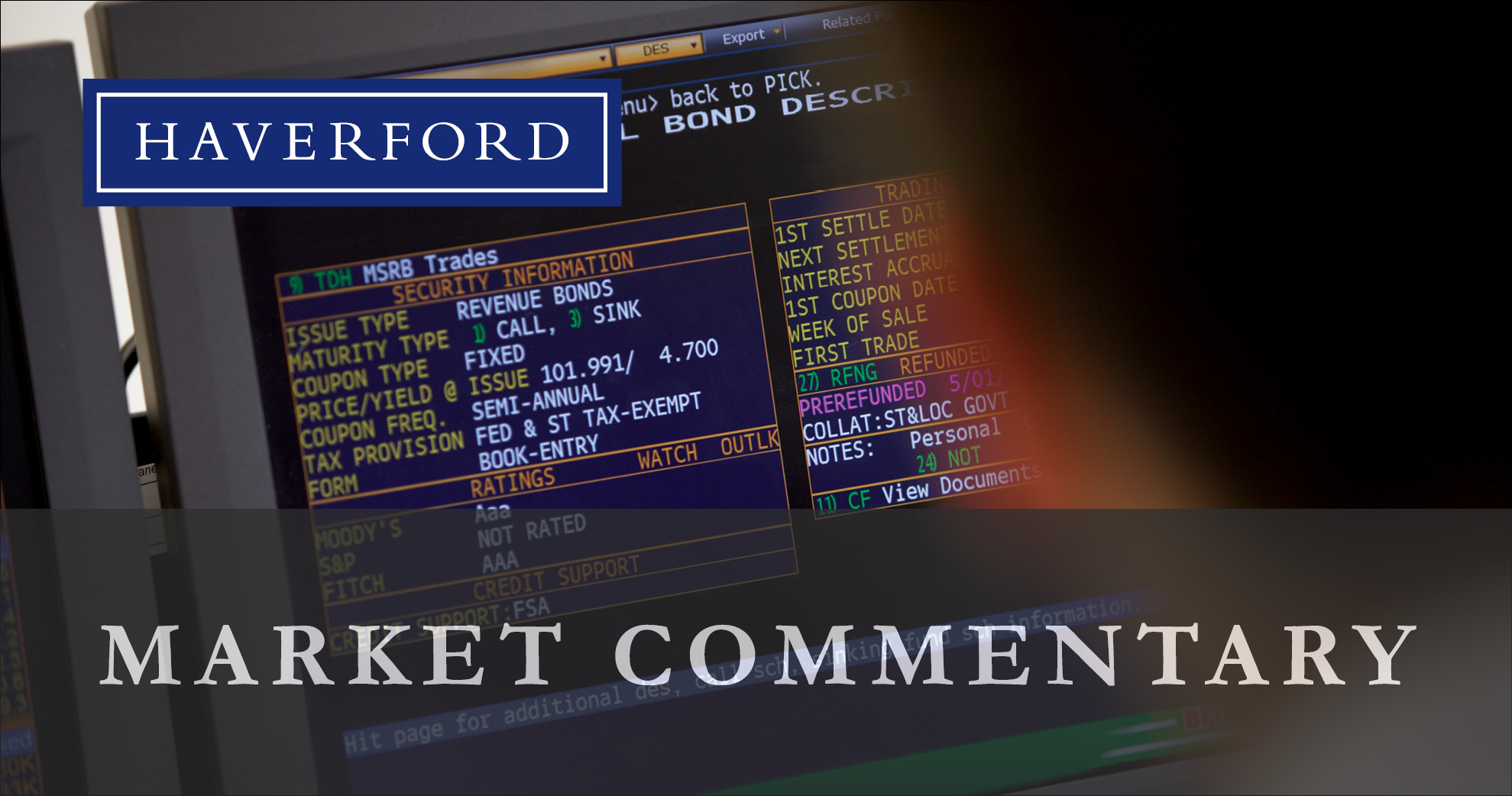Recent News and Insights
Navigating Change: Key Insights from Season 5
Hank Smith is joined by Maxine Cuffe, Vice President & Director of Global Strategies at The Haverford Trust Company, on this episode to share some of their favorite moments and lessons from Season 5 of Speaking of Quality.
Market Commentary: December 2, 2025
Tim Hoyle, Chief Investment Officer Thoyle@haverfordquality.com Confidence Low, Spending High - Navigating a K-Shaped [...]
Tim Hoyle, Chief Investment Officer Thoyle@haverfordquality.com Entering 2026 with Economic Momentum We are seeing [...]
Hank Smith is joined by Maxine Cuffe, Vice President & Director of Global Strategies at The Haverford Trust Company, on this episode to share some of their favorite moments and lessons from Season 5 of Speaking of Quality.
Looking Ahead to 2026 In this year's Annual Outlook, our research and executive leaders [...]
Tim Hoyle, Chief Investment Officer Thoyle@haverfordquality.com Confidence Low, Spending High - Navigating a K-Shaped [...]
Hank Smith is joined by Rosemary DiRita, Vice President and Philanthropic Advisor at The Haverford Trust Company, on this episode of Speaking of Quality to discuss the challenges nonprofits face today, creative structures for giving, and the role of a philanthropic advisor.
Tim Hoyle, Chief Investment Officer Thoyle@haverfordquality.com AI, Speculation, and Market Fundamentals As of mid-November, market [...]
Hank Smith is joined by Loretta Mester, member of The Haverford Trust Company’s Board of Directors, on this episode of Speaking of Quality to discuss fiscal policy, lessons from previous economic crises, and the current economic outlook.
NYSE TV – Hank Smith, Director, Head of Investment Strategy was recently interviewed by [...]






